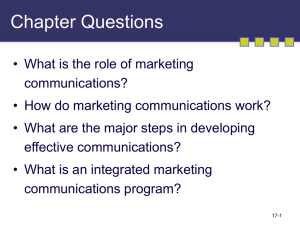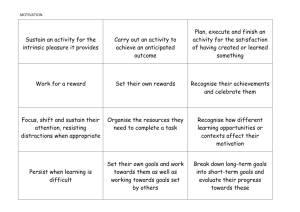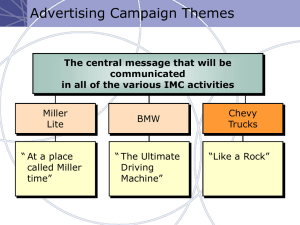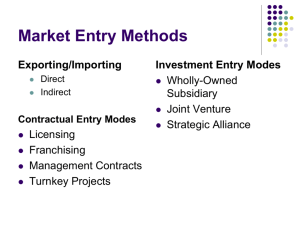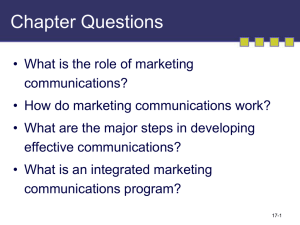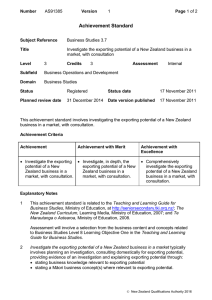Summary
advertisement
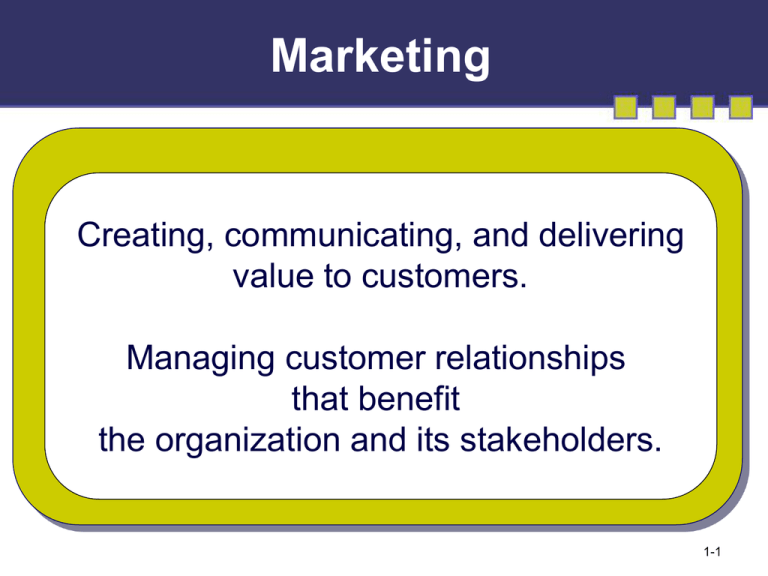
Marketing Creating, communicating, and delivering value to customers. Managing customer relationships that benefit the organization and its stakeholders. 1-1 SWOT Analysis Strengths Weaknesses Opportunities Threats 2-2 Develop Core Competencies • A source of competitive advantage • Applications in a wide variety of markets • Difficult to imitate 2-3 Environmental Assessment • Size • Growth rate • Age distribution • Ethnic mix • Household patterns • Regional characteristics • Movement • Educational levels 3-4 Population and Demographics • For many businesses in Lethbridge the critical issue is whether the population base can sustain the business. • Will 70,000 people sustain you? • How can you test this? 3-5 Marketing Research Flowchart Understanding of problem Good Objective answers by asking? Poor EXPLORATORY or SECONDARY RESEARCH No OBSERVATIONAL RESEARCH No FOCUS GROUPS Yes SURVEY Yes Need estimates of prevalence? Enhancing Customer Bonds Add financial benefits Add social benefits Add structural ties 5-7 Good Targeting… • Identify and profile distinct groups of buyers who differ in their needs and preferences. • Select one or more market segments to enter. • Establish and communicate the distinctive benefits of the market offering. 8-8 Consumer Desirability Criteria Relevance Distinctiveness Believability 10-9 Differentiating your Product • Product form • Style • Features • Design • Performance • Ordering ease • Conformance • Delivery • Durability • Installation • Reliability • Customer training • Reparability • Customer consulting • Maintenance 12-10 Pricing 1: Determine your Objective 2: Determine Demand 3: Estimate Costs 4: Analyze Competition 5: Select a Pricing Method 6: Select the Final Price 14-11 Consumer Marketing Channels 15-12 Retail Positioning Map 16-13 Advertising Diagnostics 17-14 Low Involvement High Involvement Foote, Cone & Belding (FCB) Grid Thinking Feeling 1 2 Informative The Thinker Affective The Feeler 3 4 Habit Formation The Doer SelfSatisfaction The Reactor 17-15 Direct Marketing Channels Catalogues Direct mail Telemarketing Email marketing Web sites Mobile devices 19-16 Five Modes of Entry into Foreign Markets Indirect exporting Direct exporting Licensing Joint ventures Direct investment Commitment, Risk, Control, Profit Potential 21-17 Marketing at the Corporate Level • To promote a culture of customer orientation • To be an advocate for the customer • To assess market attractiveness • To develop firm’s overall value proposition, the vision, and articulation of how it delivers superior value to customers. 22-18
